This all started when I went to cook up a Thai-style pork rib recipe from Andy Ricker’s Pok Pok cookbook. The recipe included an optional jaew, a spicy, tart dipping sauce for meat – which I thought would be quick and easy to whip up. The ribs needed to marinate for at least two hours. It couldn’t possibly take that long to make the jaew. After all, this wasn't like my first rodeo.
I got the ribs marinating then read the jaew recipe. Boy, was I an idiot. The Thai dipping sauce had 3 sub-recipes – palm sugar syrup, toasted chile powder, and ground toasted sticky rice. The palm sugar syrup required chopping up the sugar (a lazy-day sub is light brown sugar), the chile powder required Mexican puya chiles (I had Arbol chiles), and the toasted rice flour requried soaking raw sticky rice (I usually don’t soak my rice and was out of sticky rice). I had to make a decision: Would I take shortcuts to lighten my load and defy Ricker’s position against substitutions, or would I go the Full Monty and follow the recipe instructions laid out by Ricker and co-author J J Goode?
I went the Full Monty. Here’s why: Sub-recipes are often the stealth ingredients in food. They may be in a boring sounding chapter called “Basics” or “Pantry” with no or few sexy pictures, and stuck in the in the “back matter” of a cookbook. The truth of the matter is that they’re foundational, what a chef or cookbook author reaches for to complete a recipe. They’re cornerstones that make a world of difference in the outcome of a recipe.
Pok Pok is a marvelous book for the curious, patient and persistent cook. It's chock full of time-consuming recipes and personal stories that pay off in terms of a greater understanding for what Thai food is and what it can be. With the Thai staples in my pantry, I would try out not only the jaew dipping sauce, but also other dishes. I could perhaps figure out other things to do with those pantry items if I wanted to inject a little Thai into non-Thai food.
For example, the palm sugar syrup could go into a cocktail and be stirred into Southeast Asian dishes to tweak final flavors. The chile powder could dress up a bowl of instant noodle soup and finish a pizza. The rice powder (thinh in Vietnamese) could be used in Thai and Lao larb (laap) as well as Viet foods such as nem nuong grilled chicken meatballs (Into the Vietnamese Kitchen, page 87) and bi cuon chay cellophane noodle and tofu rice paper rolls (Asian Tofu, page 161). All three pantry items can be stored for weeks, months!
I headed to my local market for the Mexican puya chiles and bought a new supply of sticky rice at an Asian market. I let the ribs marinate overnight and we went out for dinner instead. Below are descriptions on how to make the Thai pantry items; I am abbreviating Ricker’s instructions in Pok Pok because you should own the book if you truly want to comprehend Thai food.
Palm sugar simple syrup (naam cheuam naam taan piip): Pick a Thai or Viet palm sugar. It’ll be light yellow in color, sold at Chinese, Viet and Thai markets. Scrape or chop the sugar up into small pieces. Aim for about 3 ounces (use a scale). Whatever your weight is, double it and use that number to measure out the number of tablespoons of water you need (e.g., 3 ounces of sugar requires 6 tablespoons of water).
Put the sugar and water in a saucepan, heat over medium, stirring and mashing the sugar until dissolved. Cool off heat briefly then store in a jar. Refrigerate up to several weeks. I made two versions from canned palm sugar (orangey syrup) and pale yellow lumps of palm sugar (golden syrup).
Toasted chile powder (prik phon khua): Use a handful of Puya chiles (sold at well-stocked markets and Mexican markets). Snap off the stems, dropping the chile into a 10-inch skillet. In my All-Clad, I had about 20 chiles. Heat the skillet over high heat until hot, stirring all the time. When the chiles have puffed up and are lightly fragrant – they’ll darken slightly, lower the heat to low.
Slowly toast for 15 to 20 minutes, stirring and flipping occasionally, until dark like espresso all over and very brittle feeling. Cool off heat. Discard all the seeds that have fallen out because they’re bitter. Grind the chiles with their internal seeds in a spice to the texture of Kosher salt or Korean gochu garu chile flakes.
I tried grinding with a mini food processor to break up the chile, then finishing it in a spice grinder (a coffee grinder I keep for spices); the spice grinder makes too fine of a texture. Even with my work around, my toasted chile powder was finer than what I wanted and what Ricker suggested in the Pok Pok recipe. It which means I’ll be using less than what he calls for in the jaew dipping sauce recipe and elsewehere in his book. I’m keep this in a jar in my spice drawer.
Ground toasted sticky rice (khao khua): Use a rice bowl's worth of long-grain sticky rice (the kind Thai and Viet cooks use most). Rinse then soak with 1 inch of water to cover for 4 hours or overnight. Drain in a mesh strainer, rinse, then shake the mesh strainer to expel excess water. Dry the rice on a double layer of dish towel for about 1 hour, or until dry to the touch; turn the rice if you want during drying.
Put the rice into a large skillet then cook over medium-low heat for 45 to 60 minutes, stirring occasionally. Toward the end, you can play with the heat to coax out a nice golden-brown color (think peanut butter as Ricker suggests). Cool off heat, then grind in a mini food processor to the texture of coarse sand. Store in a jar in a cool, dry spot.
When I first looked at the Thai dipping sauce recipe and saw these three sub recipes, I could have kicked myself for not planning better. But after hunkering down to make them, I knew that I’d have them in my back pocket for multiple future meals. Make these because I’ll write about what to do with them next week and beyond.
All three Thai pantry recipes were adapted from Pok Pok by Andy Ricker and J J Goode.
After making these staples, make jaew dipping sauce for a batch of splendid Thai-style pork ribs!
Related Ricker recipe posts:













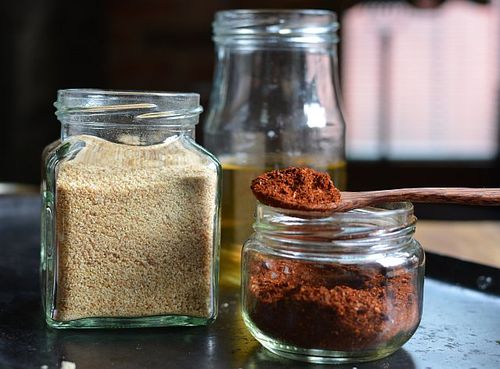
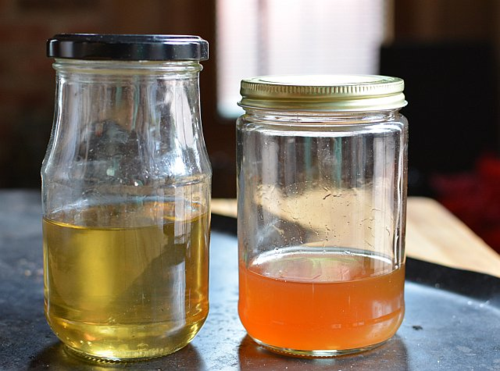
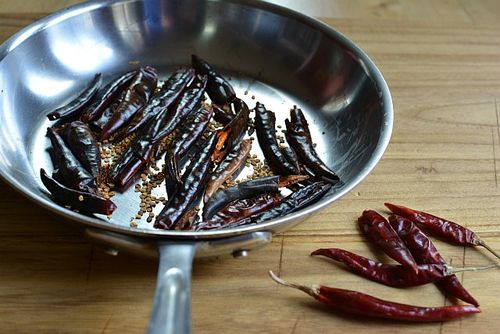
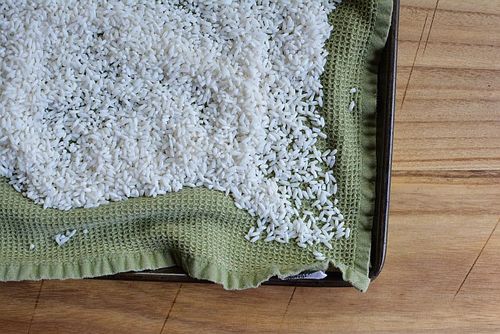
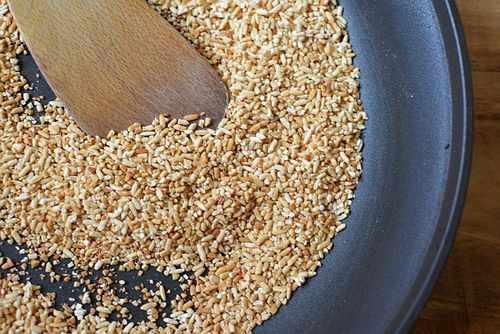




Diane says
Here you can buy good home-made rice powder at some local stores, but it's great just to make your own. The good thing about making it yourself (aside from freshness) is that you can vary the degree of coarseness wanted. I make mine sometimes - about once a year - but more often just buy it though. This ia good reminder that I should really just knuckle down and do it from scratch.
Andrea Nguyen says
Yeah, I've seen the stuff at the store but I was taught to make my own and save. There's a wonderful, deep roasted flavor. The fragrance it hard to beat...
Norio says
Are those Puya chiles in the picture? They look like chiles de arbol. I've been looking for Puyas ever since I saw one of Ricker's recipes in Saveur. So far I haven't seen them, even in Mexican markets.
Andrea Nguyen says
Those are indeed Puya chiles, Noria. The Arbol chiles are smaller.
Mikhaela Reid says
I love that you went the Full Monty and after trying some of the "pantry" and "staple" type recipes from your cookbooks, I have totally seen a difference. The time isn't wasted, either... I've found ways to use the sauces in all kinds of dishes, and the everyday carrot and daikon pickles started ending up in every sandwich, not just the banh mi from your book. And since my daughter has so many food allergies, making my condiments from scratch lets me control the ingredients and leave out the dangerous stuff.
Naomi says
Thank you for the above recipes for the three staples. I was wondering if you could use Japanese sweet glutinous (mochi) rice for the toasted rice powder? It is a short grain variety of glutinous rice and it IS very sticky. The reason I ask is that I have a batch of the stuff and would prefer to use it rather than go out and buy another rice variety to clutter up my very small kitchen :)!
Roxy says
Love this! Check out my blog at http://healthyandhappywellness.blogspot.com 🙂
Andrea Nguyen says
Right on, Mikhaela. And, I haven't forgotten your question on wheat starch!
Andrea Nguyen says
Totally, Naomi. I was looking in my pantry and thought the same thing! It's just sticky rice and you're going to grind it up.